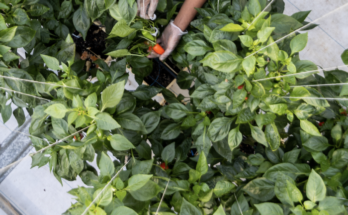Indian agriculture has in the recent years made big strides in crop production and even in terms of crop productivity. Indian farmers have become capable of producing different varieties of several crops due to geographical diversity, access to good quality inputs and technology. There can be a substantial demand for our agriculture products if the farmers adopt good agriculture practices (GAP). Non-compliance with regulations and standards have negatively impacted Indian exports in the past, thus stripping farmers of good profits. GAP can help in agriculture sustainability by protecting the environment and natural resources and for long term improvement.
GAP takes into account economic as well as social and environmental sustainability. The eco-friendly ways under GAP ensure farm labourers are not exposed to harmful chemicals during fieldwork. Since it promotes sustainable agriculture, it helps the nation meet international objectives related to global warming and climate change. It helps in the conservation of soil, water, and build climate resilience. GAP is efficient, safe and less damaging than current agricultural methods as it promotes energy efficiency in farming operations and provides space for respectful coexistence with local wildlife, bees and insects. GAP has great potential for benefiting the environment and preserving natural resources and also providing healthy and good quality food.
You may also like to read; Union Budget 2022-23: 9 Steps that can bring in decisive transformation and win back India’s farmers
Agriculture continues to be the bedrock of the Indian rural economy. Although its contribution to the country’s GDP hovers around 20 per cent, more than 50 per cent of the population is still dependent on the farm sector for their livelihoods. The majority of farmers in the country are small and marginal hence adoption of mechanisation, innovation and technology is slow, which has affected in improving farming practices.
In the international markets especially in Europe and the US, consumers are concerned about hygiene, cleanliness in food and crop production processes. In India too, the urban population can be seen demanding healthy food to remain fit. Many supermarkets and e-commerce companies can be seen exploring the situation through special marketing of fresh vegetables and fruits, often exotic ones. Good agriculture practices (GAP) helps reduce microbial contamination, rules out chances of chemical traces during farming operation and later in the agriculture produce. This improves food safety systems and market access opportunities. Reduction in economic risks and increase in profits will definitely encourage farmers to adopt GAP. This demands for sensitising all stakeholders in the agricultural supply chain– farmers, traders, exporters. A proper ecosystem should be created to ensure farmers get the best quality crop inputs and use mechanisation to avoid any contamination and link them with traders and exporters for smooth commodity sales.
You may also like to read; Union Budget 2022: Agriculture Sector Seeks Rational Reforms
Interestingly, some states in India have started working in this direction. Andhra Pradesh government has tied up with Food and Agriculture Organisation of the United Nations (FAO) to strengthen governance capabilities to help farmers adopt sustainable agriculture systems, which involve best cultivation management practices. Government of India’s agency APEDA (Agricultural and Processed Food Products Export Development Authority) too is taking measures to promote GAP. Adoption of these safe and sustainable practices will boost the efforts to discard substandard or duplicate seeds, pesticides and fertilisers from the market. Supply of best quality crop inputs will facilitate farmers get superior and export quality yield which could compete in the international market and fetch handsome profits. Other state governments too can think on these lines and get their farmers equipped for producing high-quality crops. GAP certification is also a key component. Consumers cannot recognise if farmers have maintained hygiene and used safe inputs. In such a case, GAP certification comes to the rescue. Once buyers are convinced about the quality and safety, farmers can enjoy seamless access to new markets and better remuneration.
(Dr Shivendra Bajaj is the Executive Director of the Federation of Seed Industry of India and Alliance for Agri Innovation. Views expressed in the article are the author’s own. Agriculture Post doesn’t assume any responsibility or liability for the same.)






I really love the simplicity of your blog. I must confess the way you outlined the information really resonated with me and I have bookmarked for more awesome content like this. I also have a blog and I hope my writing standards get as high as yours.